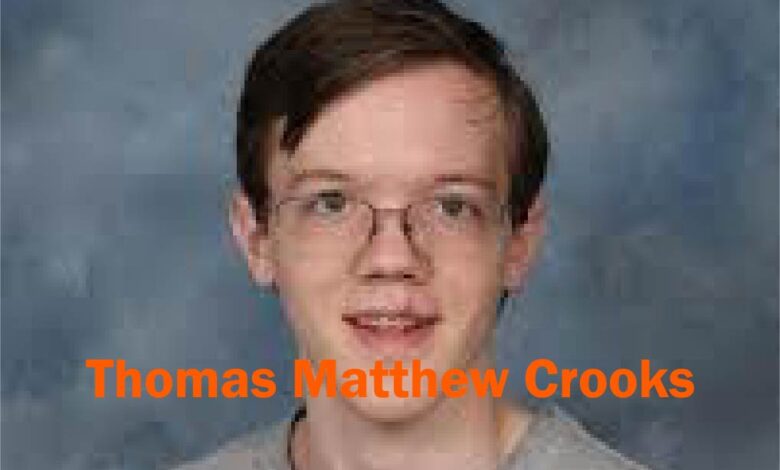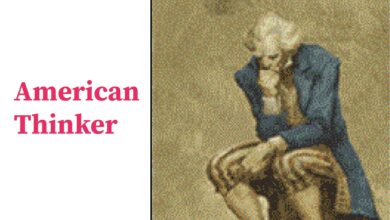Thomas Matthew Crooks Rally Shooter: Impact of Media

The name Thomas Matthew Crooks has become synonymous with the tragic events that unfolded at a political rally in Pennsylvania. Crooks, a 20-year-old from Bethel Park, Pennsylvania, made headlines when he opened fire at a rally attended by former President Donald Trump in July 2024. The shooter was fatally shot by Secret Service agents after the incident, leaving behind a trail of questions about his motives and a deeper conversation about the media’s role in shaping public perception of such events.
Who Was Thomas Matthew Crooks?
Thomas Matthew Crooks had lived a somewhat reclusive life before the shooting. Classmates remembered him as a quiet, smart young man who had a few friends but was often bullied throughout his school days. He was a 2022 graduate of Bethel Park High School and was best described by many as somewhat of a loner, someone who didn’t fit in with his peers that well. Despite these feelings of isolation, Crooks at no time expressed radical political sentiments or showed a violent streak to anyone around him, so many were shocked when news emerged about the rally shooting.
Crooks did not have a criminal record, and according to his family, they had no idea he might harbor extreme ideological views. He was registered as a Republican, although he also made a small donation to a Democratic-aligned political action committee. With this duality in his political activities, coupled with the quiet nature of his personality, the investigators have been left guessing what was actually in his mind.
The Media’s Role in Shaping the Narrative
The media’s portrayal of Crooks and their reporting on the incident have become points of considerable contention in the post-shooting debate. Indeed, as with most any such high-profile incident, media outlets engaged in something of a race to be the first to break news about Crooks’ history, motivations, and potential ideological affiliations. In came an avalanche of misinformation released. Initial reporting had speculated on the extremist-group affiliations of Crooks, and fake pictures surfaced purporting to show him in a light that was not flattering.
One of the difficulties with media reporting on such incidents is the judicious balance between speed of delivery and factuality of delivery. In the case of Crooks, because there was no obvious ideological motive, a hole was left that some filled with speculation. It can also have a lasting impact in the public’s view of that person, since initial reports often set an event in concrete for the public memory, despite any correction to such reports that may later come about.
The Impact of Social Media
Social media has become a major player in cases involving high-profile perpetrators, like Crooks, in the digital age. Within hours of the shooting, misinformation about Crooks started to circulate online. Some users made claims that he was a member of several anti-fascist groups; others exaggerated his alleged political affiliations. Social media platforms X (formerly Twitter) and Facebook also became tarring poles for conspiracy theories, as users shared unverified claims and doctored images.
Social media serve to complicate investigations and quickly distort the public understanding of events. In this case, many such false claims against Crooks were quickly knocked down by the FBI, but by then, it didn’t matter. Their inability to manage the media narrative amidst wild online speculation brings up a big problem in the information landscape today.
The Psychological Profile: Media Speculation
Another area in which the media played a major role was to build up a psychological profile of Crooks. Several stories speculated that Crooks was suffering from some sort of untreated psychological problem, maybe even some kind of serious mental illness. No evidence was presented that showed he had ever been diagnosed with any mental illness, and his behaviors before the shootings did not raise any overt concern. However, in much media, it persisted through the “disturbed young man” narrative.
Although this leap to an assumption regarding the poor state of mind of perpetrators of such violence is not new, it does raise some very important questions about how the media contributes common societal perceptions when it comes to mental illness. By repeatedly tying incidents of violence to mental health, the media involuntarily stigmatize those living with the conditions and further complicate citizens’ understanding of mental health and violence.
The Role of the Media in Prevention and Awareness
In the wake of events like the Crooks shooting, there is often a call for the media to play a more proactive role in preventing such incidents. Some argue that the media should focus on highlighting warning signs and educating the public about the risks of radicalization and violence. However, others believe that the media should tread carefully, as sensationalizing these events can inspire copycat behavior.
One of the most significant impacts the media can have is in fostering discussions about mental health, gun control, and the root causaaes of violence. By presenting these issues in a balanced and nuanced way, the media has the potential to influence public policy and societal attitudes. However, this requires a shift away from sensationalism and toward responsible journalism.
FAQs
1. Who tried to shoot President Trump?
Thomas Matthew Crooks attempted to assassinate Donald Trump at a rally in July 2024. He fired multiple shots but was killed by Secret Service agents.
2. How many US presidents have been assassinated?
Four U.S. presidents have been assassinated: Abraham Lincoln, James A. Garfield, William McKinley, and John F. Kennedy.
3. What happened to Crooks during the shooting?
Crooks was shot and killed by Secret Service agents after firing at Trump, injuring him in the ear and killing one rally attendee.
4. Why did Crooks shoot at Trump?
Crooks’ exact motives remain unclear, though no evidence of ideological or extremist ties has been found.
5. Who was the first U.S. president to be assassinated?
Abraham Lincoln was the first U.S. president to be assassinated, shot by John Wilkes Booth in 1865.
6. Has there been any other recent assassination attempt on Trump?
There was another attempt involving Ryan Routh in 2024, but Crooks’ attempt was the more serious and widely reported one.
The Bottom Line
The case of Thomas Matthew Crooks is one that starkly reminds one of the complex relationship between media and violence in relation to public perception. While his motivation has remained varied, it is undeniable that the media played a big role in shaping the narrative in regard to him. Starting from misinformation to speculation regarding his psychological state-the media covered his actions in a way that left a mark on how the public remembered him.
With mass shootings and political violence continuing to heat up in society, the need is similarly relentless for reflection within media regarding its role in such an affair. By keeping a priority on accuracy and eschewing sensationalism, the media can help build a more informed, more compassionate public discourse-and even play its part in preventing a future tragedy.




